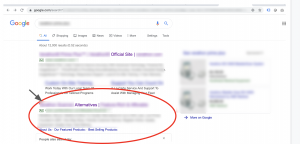
If you’re a customer success leader, the word “churn” makes you cringe. While there are many variations in how the term is used, it’s always a measure of attrition or loss, and it can refer to lost customers, contracts, MRR, revenue, contract value, or bookings.
Decrease Customer Churn
For customer success leaders, managing churn of customers can be daunting, especially as your team grows. Not only is it your responsibility to reduce churn rates and keep customers satisfied with your product or offering, but you need to continually look after and grow your accounts – no matter how irreversible the situation may seem.
As a customer success leader or CSM, there are best practices to decrease the amount of churn you see across your customer base, but the common ingredient is proactiveness. Here are five ways you can be proactive when looking after your customers with the goal of decreasing churn and increasing satisfaction, and therefore growth:
5 Best Practices to Be Proactive about Customer Churn
1. Understand Product Usage Patterns
How do you as a CMS manage churn if you don’t have full visibility into how the customer is actually using the platform or service? What if they aren’t using it at all? For customer success teams, one of the best investments they can make is in technology that gives them the ability to actually monitor what features the customer is using. The technology should answer a few important questions. How are core features working for them? What are the areas of the platform where they get hung up? What are they not using? What are the customer’s goals, and how does their usage (or lack of) correlate to their satisfaction with your product and your business? As a customer success manager, it’s important to have these answers are your fingertips.
Not only is usage visibility important, but so is understanding trends of what the usage patterns show over time. Based on the data of other customers, do you see trends or patterns that become signals of possible churn? Usage patterns and understanding how your customers are interacting with your product or service is valuable. And that all begins with understanding your customer’s goals, and managing towards a better outcome. This will help you quickly identify customers who might churn.
2. Watch for Organizational Changes
Organizational changes are not something SaaS companies can control or influence, but it’s something that can indicate churn, according to a recent OpenView Labs post. “For instance, if you sell CRM software and the chief marketing officer who signed off on your product leaves the company, it’s worth considering that the new CMO may prefer a different CRM system. It might not be easy to determine if that is indeed the case, but organizational or decision maker turnover is often a very good indicator of potential churn.”
So what to do?
Always monitor these changes across the customer accounts you manage, and be proactive about reaching out to the new employee – no matter their role. The sooner you reach out, the less likely your competition will beat you to the punch. And rather than approaching the conversations as a sales pitch as to why your product or service was chosen in the first place, get to know the new individual. Begin to understand their personal goals and how those goals relate to the team or company objectives. Once you understand their background, preferences, and vision, only then can you truly prove your value by sharing results and building trust.
3. Build Relationships High & Wide
Too often, relationships with customers are too shallow and narrow. Contracts are signed, users are trained, software is used, but few relationships are developed outside of the day-to-day contacts. Sometimes that works, but most of the time it’s a risky proposition. What happens if your only contact leaves the company? You’re likely left with no advocate and no additional relationships within the account. Plain and simple: you’re at risk of losing them as a customer.
In an earlier blog post, we introduced a concept called “High & Wide”, which is typically referenced as a sales strategy but equally applies to customer success. As it suggests, the concept references the goal to develop as many relationships as possible high and wide within your customer’s organization. Rather than having the entire relationship hinge on one or two lower-level contacts that have little to no influence or buying power, broaden your scope to develop as many relationships as possible throughout the organization. Not only will you strengthen the overall relationship, but you’ll also uncover other opportunities to add value in their business that may result in expansion revenue.
4. Improve the Onboarding Process
When it comes to churn first impression matter. And your onboarding process quickly shows how you treat your customers post sale. If your goal is to continually add users onto your product or service, then it’s imperative that you have a seamless and intuitive onboarding program. You may actually be losing customers during the onboarding process itself. The process starts from the first call-to-action a customer sees, and can expand over a period of time to make sure the customer continues using your product or service.
Onboarding issues can arise when:
- It isn’t clearly explained how to use the product or service
- The value of the product or service isn’t highlighted
- The marketing or sales team gives a false impression of the product’s function
- Follow-through and hands-on assistance is missing
- The right tools, documentation, and training essential to learning the product or service is lacking or non existent
The onboarding process should be made as easy, simple and clear as possible. Even minor tweaks can help customers take action.
Analyze your onboarding stats. Where do your customers stumble and give up? Ask yourself how you can make the process easier, more enjoyable, and more intuitive to adopt. Keep in mind that a great onboarding process is quick, painless, and consistently reinforces your company’s value to the problem they are looking to solve.
5. Educate More Than You Sell
This may sound counter-intuitive. You’re paid to upsell your accounts, but sometimes outright selling can actually do more harm than good. If your customers trust you and know that you are doing what’s best for them, their company, and their goals, then they will in turn look to you for guidance on what other solutions or services you would recommend. But often times, this doesn’t come from a sales pitch – it’s an investment into educating more than selling.
Make sure that you are providing resources above and beyond for customers, such as: training seminars, certification classes, how-to blogs or workbooks, customer user groups or meetups, in-depth customer case studies via webinars or field marketing events, templates, hands-on learning guides, executive meetups, and more. The options for providing significant education opportunities are endless.
Educational resources can help your customer become more familiar with your products, services, and processes which will help customers feel closer to your offering as well as to your people. But perhaps the biggest benefit – beyond stickiness and upsell potential – is the likelihood that your customers will see your SaaS company as a trusted partner. They will view your team as an extension of their own company and will share your resources with others and will seek input and advice.
How Does Your Organization Reduce Churn?
Reducing churn while being proactive with customer accounts is the key for customer success leaders. How is your company reducing churn and establishing powerful relationships with your customers?
Check out our resources below for more customer success best practices and insights for how your organization can put customers first:
Ebook:
5 Ways to Surprise & Delight Your Customers
Business & Finance Articles on Business 2 Community(137)
Report Post








